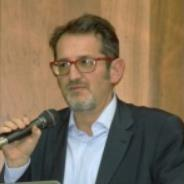Remote Sensing for Archaeology and Cultural Landscapes
A special issue of Sustainability (ISSN 2071-1050). This special issue belongs to the section "Sustainability in Geographic Science".
Deadline for manuscript submissions: closed (30 June 2021) | Viewed by 37501
Special Issue Editors
Interests: data integration modelling; artificial intelligence for cultural heritage; earth observation technologies for historical landscape
Special Issues, Collections and Topics in MDPI journals
Interests: heritage science; remote sensing in archaeology; architectural conservation; archaeological science; humanities
Special Issues, Collections and Topics in MDPI journals
Special Issue Information
Dear Colleagues,
Remote sensing is emerging as a key tool for both archaeology and the development and management of cultural heritage. For countries with fledgling site and monument records, it provides the only cost-effective means for locating and defining archaeological sites and landscapes. Remote sensing, particularly its usefulness in providing regular and repeated imagery of less-accessible areas, is also of unparalleled importance for monitoring the effects of climate change, urban and rural development, looting, and conflict. Furthermore, the produced data provide an exciting opportunity to examine past human–environment dynamics. We invite you to submit articles on topics including, but not limited to:
- cultural and practical interconnections between environment, culture, territory, and climate change;
- from aerial photos to declassified satellite images: the study of landscape over time using historical data sources;
- Synthetic Aperture Radar (SAR) for palaeoenvironmental applications, site detection, and risk monitoring;
- from visual data interpretation to semiautomatic and automatic procedures from an archaeological perspective;
- Remote Sensing, Geographical Information System (GIS), and Geospatial analysis for risk monitoring and the management of cultural resources;
- the integration of space/air borne and ground remote sensing in archaeogeophysics;
- the “LiDAR revolution” for site discovery and the reconstruction of historical landscapes;
- remote sensing methods for studying past human–environment interactions; and
- tools and ideas for creating a platform to share knowledge and data.
Dr. Rosa Lasaponara
Dr. Nicola Masini
Guest Editors
Manuscript Submission Information
Manuscripts should be submitted online at www.mdpi.com by registering and logging in to this website. Once you are registered, click here to go to the submission form. Manuscripts can be submitted until the deadline. All submissions that pass pre-check are peer-reviewed. Accepted papers will be published continuously in the journal (as soon as accepted) and will be listed together on the special issue website. Research articles, review articles as well as short communications are invited. For planned papers, a title and short abstract (about 100 words) can be sent to the Editorial Office for announcement on this website.
Submitted manuscripts should not have been published previously, nor be under consideration for publication elsewhere (except conference proceedings papers). All manuscripts are thoroughly refereed through a single-blind peer-review process. A guide for authors and other relevant information for submission of manuscripts is available on the Instructions for Authors page. Sustainability is an international peer-reviewed open access semimonthly journal published by MDPI.
Please visit the Instructions for Authors page before submitting a manuscript. The Article Processing Charge (APC) for publication in this open access journal is 2400 CHF (Swiss Francs). Submitted papers should be well formatted and use good English. Authors may use MDPI's English editing service prior to publication or during author revisions.
Keywords
- LiDAR
- SAR
- Satellite
- Earth observation
- Big data
- Data processing
- Data integration
- In situ analysis
- Uav
- Risk monitoring and CH preservation
- best practices for CH preservation
- sustainability
- tourism
- climate change






